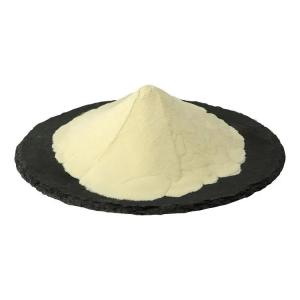News list
News Center
Hot Product
News
Phosphoric acid and responsible dietary choices
Time:2025-10-13
1. Introduction
Phosphoric acid (H₃PO₄) is a common food additive widely used in beverages, processed foods, and various flavoring systems. It contributes to acidity control, preservation, and sensory appeal. While its use in food manufacturing is considered safe under regulated conditions, understanding its presence and managing intake through responsible dietary choices are important aspects of modern nutrition awareness.
2. Presence of Phosphoric Acid in Foods
Phosphoric acid is most frequently found in carbonated soft drinks, processed cheeses, and certain baked or canned foods. Its main function is to balance pH, improve flavor, and extend shelf life. As a result, it often appears in foods that are highly processed or sweetened. Learning to identify products that contain phosphoric acid on ingredient labels helps consumers make informed food decisions.
3. Nutritional Context of Phosphorus
Phosphorus, derived partly from phosphoric acid, is an essential mineral for bone structure, cell function, and energy metabolism. However, dietary phosphorus should ideally come from natural sources such as dairy products, legumes, whole grains, and nuts. These foods provide not only phosphorus but also additional nutrients like calcium, magnesium, and protein that contribute to overall health balance.
4. Considering Processed vs. Natural Sources
From a dietary responsibility standpoint, it is important to differentiate between phosphorus that occurs naturally in whole foods and that which comes from additives. Phosphoric acid in processed foods may increase total phosphorus intake without adding other beneficial nutrients. Over time, a diet heavily based on processed products can disrupt the balance between phosphorus and other minerals.
5. Role of Education and Awareness
Developing awareness about food additives such as phosphoric acid supports responsible eating habits. Reading ingredient labels, choosing beverages with lower additive content, and prioritizing natural, minimally processed foods are practical steps toward a balanced diet. Educational programs and public health initiatives can play a key role in helping individuals understand how ingredients influence long-term dietary quality.
6. Practical Tips for Responsible Choices
Check ingredient labels: Identify “phosphoric acid” or “E338” in beverages and packaged foods.
Prioritize natural foods: Opt for water, milk, or natural fruit juices instead of soft drinks.
Balance nutrient intake: Pair phosphorus-rich foods with adequate calcium and magnesium sources.
Moderate processed food consumption: Limit items with excessive additives and artificial flavor enhancers.
7. Conclusion
Phosphoric acid is a functional and approved food additive, yet its presence in many processed foods highlights the importance of mindful consumption. Responsible dietary choices involve balancing convenience with nutritional quality, understanding ingredient lists, and maintaining moderation. Through awareness and education, individuals can enjoy diverse foods while supporting long-term well-being and sustainable eating habits.
Phosphoric acid (H₃PO₄) is a common food additive widely used in beverages, processed foods, and various flavoring systems. It contributes to acidity control, preservation, and sensory appeal. While its use in food manufacturing is considered safe under regulated conditions, understanding its presence and managing intake through responsible dietary choices are important aspects of modern nutrition awareness.
2. Presence of Phosphoric Acid in Foods
Phosphoric acid is most frequently found in carbonated soft drinks, processed cheeses, and certain baked or canned foods. Its main function is to balance pH, improve flavor, and extend shelf life. As a result, it often appears in foods that are highly processed or sweetened. Learning to identify products that contain phosphoric acid on ingredient labels helps consumers make informed food decisions.
3. Nutritional Context of Phosphorus
Phosphorus, derived partly from phosphoric acid, is an essential mineral for bone structure, cell function, and energy metabolism. However, dietary phosphorus should ideally come from natural sources such as dairy products, legumes, whole grains, and nuts. These foods provide not only phosphorus but also additional nutrients like calcium, magnesium, and protein that contribute to overall health balance.
4. Considering Processed vs. Natural Sources
From a dietary responsibility standpoint, it is important to differentiate between phosphorus that occurs naturally in whole foods and that which comes from additives. Phosphoric acid in processed foods may increase total phosphorus intake without adding other beneficial nutrients. Over time, a diet heavily based on processed products can disrupt the balance between phosphorus and other minerals.
5. Role of Education and Awareness
Developing awareness about food additives such as phosphoric acid supports responsible eating habits. Reading ingredient labels, choosing beverages with lower additive content, and prioritizing natural, minimally processed foods are practical steps toward a balanced diet. Educational programs and public health initiatives can play a key role in helping individuals understand how ingredients influence long-term dietary quality.
6. Practical Tips for Responsible Choices
Check ingredient labels: Identify “phosphoric acid” or “E338” in beverages and packaged foods.
Prioritize natural foods: Opt for water, milk, or natural fruit juices instead of soft drinks.
Balance nutrient intake: Pair phosphorus-rich foods with adequate calcium and magnesium sources.
Moderate processed food consumption: Limit items with excessive additives and artificial flavor enhancers.
7. Conclusion
Phosphoric acid is a functional and approved food additive, yet its presence in many processed foods highlights the importance of mindful consumption. Responsible dietary choices involve balancing convenience with nutritional quality, understanding ingredient lists, and maintaining moderation. Through awareness and education, individuals can enjoy diverse foods while supporting long-term well-being and sustainable eating habits.
Previous:Educational focus on phosphoric acid nutrition
Next:None


 CN
CN





